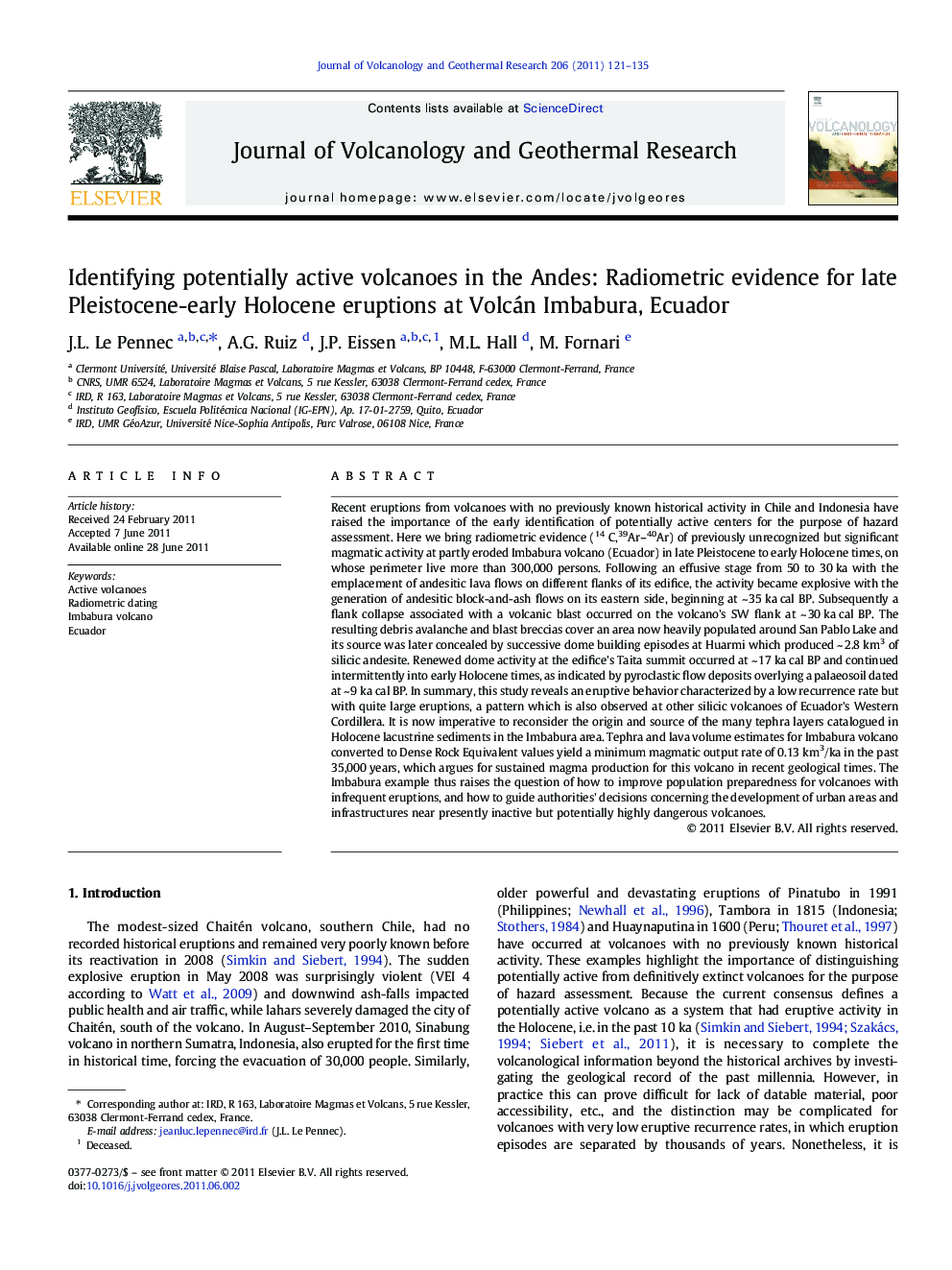| Article ID | Journal | Published Year | Pages | File Type |
|---|---|---|---|---|
| 4712785 | Journal of Volcanology and Geothermal Research | 2011 | 15 Pages |
Recent eruptions from volcanoes with no previously known historical activity in Chile and Indonesia have raised the importance of the early identification of potentially active centers for the purpose of hazard assessment. Here we bring radiometric evidence (14 C,39Ar–40Ar) of previously unrecognized but significant magmatic activity at partly eroded Imbabura volcano (Ecuador) in late Pleistocene to early Holocene times, on whose perimeter live more than 300,000 persons. Following an effusive stage from 50 to 30 ka with the emplacement of andesitic lava flows on different flanks of its edifice, the activity became explosive with the generation of andesitic block-and-ash flows on its eastern side, beginning at ~ 35 ka cal BP. Subsequently a flank collapse associated with a volcanic blast occurred on the volcano's SW flank at ~ 30 ka cal BP. The resulting debris avalanche and blast breccias cover an area now heavily populated around San Pablo Lake and its source was later concealed by successive dome building episodes at Huarmi which produced ~ 2.8 km3 of silicic andesite. Renewed dome activity at the edifice's Taita summit occurred at ~ 17 ka cal BP and continued intermittently into early Holocene times, as indicated by pyroclastic flow deposits overlying a palaeosoil dated at ~ 9 ka cal BP. In summary, this study reveals an eruptive behavior characterized by a low recurrence rate but with quite large eruptions, a pattern which is also observed at other silicic volcanoes of Ecuador's Western Cordillera. It is now imperative to reconsider the origin and source of the many tephra layers catalogued in Holocene lacustrine sediments in the Imbabura area. Tephra and lava volume estimates for Imbabura volcano converted to Dense Rock Equivalent values yield a minimum magmatic output rate of 0.13 km3/ka in the past 35,000 years, which argues for sustained magma production for this volcano in recent geological times. The Imbabura example thus raises the question of how to improve population preparedness for volcanoes with infrequent eruptions, and how to guide authorities' decisions concerning the development of urban areas and infrastructures near presently inactive but potentially highly dangerous volcanoes.
► We present the first radiometric evidence of late Pleistocene–early Holocene magmatic activity at Imbabura volcanic complex, Ecuador. ► The volcano experienced substantial effusive and explosive activity with emplacement of many block-and-ash flows in the past 35 ka cal BP, and a blast event at ~ 30 ka cal BP. ► Repeated debris flows have impacted the populated base of the edifice since 3 ka cal BP. ► The Imbabura example raises the question of how to improve population preparedness near presently inactive but potentially dangerous volcanoes.
